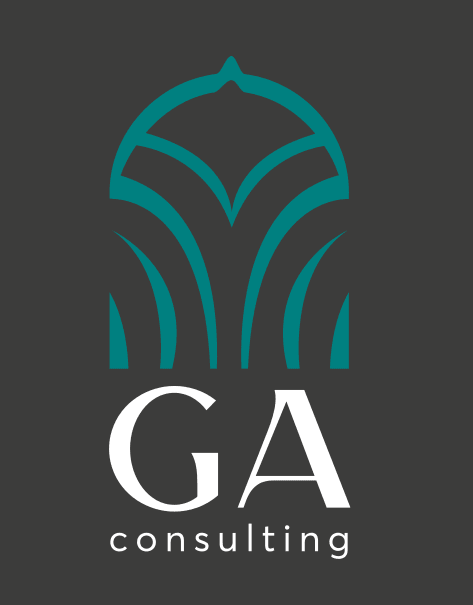As urban populations burgeon and green areas dwindle, the design of sports centers emerges as a pivotal thing of modern-day metropolis making plans and architectural innovation. The comparative sizes of sports activities pitches and courts wield enormous have an effect on, now not simply at the layout of these structures, however also on their sustainability, versatility, and integration within the urban material. This article delves into the nuanced dimensions of diverse sports areas, scrutinizing their impact on structure, sustainability practices, and the actual property landscape. From the compact courts of badminton to the sprawling fields of baseball, each game offers wonderful demanding situations and possibilities for architects and urban planners looking for to create spaces that not simplest cater to athletic desires but additionally foster community engagement and environmental stewardship.
Navigating the tricky realm of indoor and out of doors sports facilities reveals a tapestry of considerations, from modular designs to electricity-efficient technology, aimed toward maximizing space utility and minimizing ecological footprints. By inspecting case research just like the London 2012 Olympic Park and drawing insights from innovative urban revitalization initiatives just like the High Line in New York City, we find how strategic layout alternatives can transform sports activities facilities into colorful, multipurpose hubs that enhance the social, financial, and environmental landscapes of cities. Join us on this adventure as we explore the transformative capacity of sports architecture in shaping more healthy, extra sustainable city environments for generations to return.
Sizes of Sports Courts and Pitches
Badminton:
Badminton England (BE) oversees the sport of badminton inside the UK. The general court length for badminton is 13.4 through 6.1 meters. To properly accommodate umpire chairs, additional width can be required between court facets outdoor of the safety runoff areas. Recreational badminton courts commonly have a reduced runoff to department netting, measuring 1. Five meters on the ends and 1.2 meters at the sides. Including runoff regions, the general length of a badminton courtroom in a current hall is 17. Four through 9.1 with the aid of 6.7 meters, while a new corridor measure 17.4 by way of 9.1 via 7.6 meters, each with a cease runoff of two meters. For more spacious facilities, dimensions make bigger to 18 by 10. Five by way of 9.1 meters with a 2.3-meter end runoff, or maybe 21 via 10. Five via nine.1 meters with a three.8-meter cease runoff, ensuring ample space for officers and top of the line playing situations.
For more data visit: https://www.badmintonengland.co.uk/

Bowls-Flat
The English Indoor Bowling Association (EIBA) is the national governing body for indoor bowls in the UK. The standard size for an indoor bowls court is a minimum of 36.5 by 4.6 meters. The overall size of an indoor bowls facility must account for the number of rinks and include additional dimensions: an end ditch width of 0.3 meters, a side ditch width of 0.125 meters, boundary peg side margins of 0.46 meters, and side and end surrounds that are at least 1.5 to 2 meters wide, excluding space for lockers. These dimensions ensure adequate space for players and equipment, as well as safety and functionality of the indoor bowls environment.
For more data, visit http://www.eiba.co.uk

Bowls -Crown
The English Short Mat Bowling Association (ESMBA) is the governing body for short mat bowls in the UK. The standard size for a short mat bowls court ranges from a minimum of 12.2 by 1.83 meters to a maximum of 13.75 by 1.83 meters, with rink widths subject to a tolerance of +/- 50mm. These lengths include the ditches. The overall size of a short mat bowls facility must accommodate the number of rinks and include additional space: a minimum of 0.3 meters between rinks, side and end surrounds with at least 1-meter clear zones, plus an additional 1-meter allowance for spectators. These specifications ensure a comfortable and functional space for both players and spectators, maintaining the standards required for short mat bowls competitions and recreational play.
For more details, visit http://www.esmba.co.uk/

Cricket (Six-A-Side):
The England and Wales Cricket Board (ECB) oversees six-a-side cricket within the UK. The basic court size for a two-lane indoor cricket facility ranges from a minimum of 31.62 by 7.2 meters to a maximum of 31.62 by 8 meters. Generally, there should be a minimum clear area of 1 meter around all sides of the outer play netting. Each lane should be between 3.6 meters wide (minimum) and 4 meters wide (maximum), with the height to the top net at a maximum of 5 meters and the height to the underside of the loft net at a minimum of 4 meters. Cricket lane lengths may be adjusted to fit a standard four-court sports hall of 33 by 18 meters. For cricket-specific indoor centres, the ECB prefers facilities to provide 4 to 6 lanes, depending on space and planning constraints.
The overall size of a two-lane facility, including run-off areas, should range from a minimum of 33.62 by 9.2 meters to a maximum of 33.62 by 10 meters. This ensures adequate space for safe play and appropriate facilities.
For more detailed information, visit http://www.ecb.co.uk.

Tchoukball:
The Tchoukball Association of Great Britain (TAGB) oversees Tchoukball in the UK.
The basic court size for Tchoukball varies depending on whether it is played indoors or outdoors:
– Indoor Court Size:
– Minimum: 20 by 15 meters
– Preferred: 30 by 15 meters
– Maximum: 40 by 20 meter
– Outdoor Court Size (on sand or natural turf):
– Minimum: 30 by 15 meters
– Preferred: 40 by 20 meters
The NGB recognizes Tchoukball played indoors (e.g., sports halls) and outdoors on sand or natural turf. It’s recommended to avoid artificial turf due to the risk of injury to players.
International Tchoukball Rules require a 2-meter safety runoff. However, a minimum safety runoff of 1 meter is acceptable, but a 2-meter runoff is preferred elsewhere.
The overall size of the court, including the safety runoff, ranges from a minimum of 22 by 17 meters to a maximum of 44 by 24 meters. These specifications ensure sufficient space for safe play and accommodate different venues and levels of competition in Tchoukball.
For more details, visit http://www.ecb.co.uk.

Football (Five-A-Side):
The Football Association (FA) oversees five-a-side football in the UK. The basic court size for five-a-side football ranges from a minimum of 25 by 16.5 meters to a maximum of 50 by 35 meters. While there is no specific minimum height requirement, height provisions are typically driven by other sports using the same space, such as badminton, gymnastics, and tennis.
For sports halls, walls may be used as the court boundary where safe, or rebound boards can be provided. These surfaces must be impact-resistant, smooth, and finished to prevent dusting or flaking, with no protrusions and any doors either avoided or made flush and opening outwards. There are no specific run-off requirements for five-a-side football courts in sports halls, ensuring flexibility in using existing hall dimensions and structures.
For more details: visit http://www.thefa.com

Basketball:
Basketball England (BE) oversees the sport of basketball within the UK. The basic court size for basketball ranges from a minimum of 26 by 14 meters to a preferred size of 28 by 15 meters. Standard four-court sports halls measuring 33 by 18 meters are sufficiently large to accommodate a preferred size court of 28 by 15 meters, but this is suitable only for recreational or local club level use due to a reduced run-off area of 1.5 meters along the length of the court. A minimum run-off of 1.05 meters is applicable for recreational and club use only. For county, regional, national, and international competitions, a 2.05-meter run-off is required. The overall court size, including the run-off area, ranges from a minimum of 28.1 by 16.1 by 7 meters to a preferred size of 32.1 by 19.1 by 7 meters, excluding provisions for benches. When including 0.9 meters for benches, the dimensions range from 28.1 by 17 by 7 meters to 32.1 by 20 by 7 meters. For more comprehensive facilities, including 3 meters for officials, dimensions range from a minimum of 30.1 by 21.1 by 7 meters to a preferred size of 32.1 by 22.1 by 7 meters.
For more information, visit http://www.englandbasketball.co.uk

Squash:
Squash courts, regulated with the aid of England Squash, maintain a popular size of 9.75 by way of 6. Four meters, with run-off regions and courtroom dimensions specified for foremost gameplay.

Get presentation that provides a detailed comparison of the sizes of various sports courts and pitches, offering insights into their dimensions and layout.

Tennis:
For tennis courts sanctioned by the Lawn Tennis Association (LTA), here are the specifications:
Basic Court Size:
– 23.77 x 10.97 meters (standard doubles court size)
Side Run-off:
– Between courts not separately enclosed: 3.66 meters minimum or 4.27 meters preferred.
– For example, a two-court area would be 34.75 x 31.77 meters minimum or 36.57 x 33.53 meters preferred.
Overall Size including Run-off:
– Minimum: 34.75 x 17.07 meters
– Preferred: 36.57 x 18.29 meters
These dimensions ensure ample space for players to maneuver comfortably during matches and allow for efficient court utilization in multi-court setups.

Baseball:
The British Baseball Federation (BBF) oversees baseball in the UK.
The basic pitch size, also known as the diamond, varies depending on the age group:
– For U13: 21.34 by 21.34 meters
– For U16: 24.38 by 24.38 meters
– For Adult: 27.43 by 27.43 meters
Additionally, there are minimum requirements for distances:
– Minimum 12.2 meters from foul line to dead ball line
– Fence or grandstand must be at least 18.3 meters from the base or foul line
Overall field dimensions may vary depending on the age group, league, or event category. It is recommended to discuss detailing of bases, fencing/ball arrest netting, and batting cage directly with the National Governing Body (BBF).
The overall size of the field, including runoffs, for U13 baseball is approximately 73.16 by 73.17 meters. These specifications ensure sufficient space for safe play and accommodate the varying needs of different age groups and leagues in baseball.
For more information, visit http://www.baseballsoftballuk.com/.

Volleyball
The English Volleyball Association (EVA) governs volleyball in the UK.
The basic court size for volleyball is 18 by 9 meters minimum. Safety runoff requirements vary depending on the level of play:
– For recreational and club play, a minimum safety runoff of 3 meters is required on all sides.
– For national league play, the preferred safety runoff should be 5 meters to the ends and 4 meters to the sides.
– For FIVB governed World/Official competitions, the safety runoff increases to a minimum of 5 meters to the sides and 8 meters to the ends.
The overall size of the court, including the safety runoff, varies depending on the level of play:
– For recreational and club play, the minimum overall size is 24 by 15 by 7 meters.
– For national league play, the minimum overall size is 28 by 17 by 9 meters, with a preferred size of 28 by 17 by 9 meters.
– For FIVB competitions, the minimum overall size is 34 by 19 by 12.5 meters.
These specifications ensure sufficient space for safe play and accommodate different levels of competition in volleyball, ranging from recreational play to elite-level tournaments.
For more detailed information, visit http://www.volleyballengland.org.

Rugby League:
For Rugby League, the Rugby Football League (RFL) provides guidelines for pitch sizes:
Basic Pitch Size:
– For recreational play: 88 x 55 meters minimum, with a maximum of 100 x 68 meters.
– This measurement is taken between the goal lines.
In-goal Areas:
– In-goal areas are to be 6 meters minimum and 11 meters maximum at each end of the pitch.
Safety Run-off Margin:
– A safety run-off margin of 2 meters minimum and 3 meters preferred is recommended.
Overall Pitch Size including In-goal Area:
– For recreational play: 100 x 55 meters minimum, with a maximum of 122 x 68 meters.
Overall Size including Run-off:
– For recreational play: 104 x 59 meters minimum, with a maximum of 128 x 74 meters.
These measurements include the in-goal areas and account for the minimum and preferred safety run-off margins. It’s noted that pitch sizes below the preferred dimensions may be accepted for recreational play.

Rugby Union:
For Rugby Union, the Rugby Football Union (RFU) provides guidelines for pitch sizes:
Basic Pitch Size for Schools:
– Up to Under 7’s/8’s: 60 x 30 meters maximum
– Under 9’s/10’s: 60 x 35 meters maximum
– Under 11’s/12’s: 60 x 43 meters maximum
– These sizes are maximum, and there are no specified minimum pitch sizes.
In-goal Area:
– For schools:
– Up to Under 7’s/8’s: 70 x 30 meters maximum, with a 5-meter in-goal area each end.
– Under 9’s/10’s: 70 x 35 meters maximum, with a 5-meter in-goal area each end.
– Under 11’s/12’s: 70 x 43 meters maximum, with a 5-meter in-goal area each end.
Overall Size including Run-off for Schools:
– Up to Under 7’s/8’s: 80 x 40 meters maximum
– Under 9’s/10’s: 80 x 45 meters maximum
– Under 11’s/12’s: 80 x 53 meters maximum
– There’s no specified minimum safe over-run, but a 5-meter clear margin around the pitch is recommended where possible.
Basic Pitch Size for Seniors:
– Senior: 100 x 70 meters maximum
– These sizes are maximum, and there are no specified minimum pitch sizes.
In-goal Area for Seniors:
– For seniors: 144 x 70 meters maximum, with a 10-meter minimum in-goal area recommended where possible, up to 22 meters maximum.
Overall Size including Run-off for Seniors:
– For seniors: 154 x 80 meters maximum
– Similar to school pitches, there’s no specified minimum safe over-run, but a 5-meter clear margin around the pitch is recommended where possible.

Hockey (Indoor and Outdoor):
England Hockey (EH) governs hockey in the UK. The basic court size for hockey varies depending on the level of play:
– Minimum court size: 36 by 18 meters
– Preferred court size: 44 by 22 meters
There is no specific minimum height requirement for hockey courts; the height provision is typically driven by the requirements of other sports using the space, such as badminton, gymnastics, and tennis.
The runoff for hockey courts is 3 meters at the ends and 1 meter at the sides, measured outside of 0.1-meter side boards.
The overall size of the court, including runoffs and space for officials, ranges from a minimum of 42 by 20.2 meters to a maximum of 50 by 25.4 meters. This ensures sufficient space for safe play and accommodates different levels of competition.
For more information, visit http://www.englandhockey.co.uk/.

Netball:
Under the governance of England Netball, netball courts degree 30.5 by way of 15.25 meters, with specific run-off areas and court docket dimensions.

Other Sports
American Football:
The British American Football Association (BAFA) oversees American football in the UK.
The basic pitch size for American football is 109.73 by 48.77 meters minimum. All dimensions are metric conversions from the Imperial units used in the American game.
For the playing field, allowances are required for various areas:
– Restricted zone: 45.72 by 1.83 meters
– Coaching Box: 45.72 by 1.83 meters
– Team Area: 45.72 by 3.66 meters minimum
– Pitch limit line: set 1.83 meters minimum or 3.66 meters preferred from the pitch, with the limit line set 1.83 meters from the rear/sides of the Team Area. If space is limited, the 1.83-meter margin to the rear of the Team Area can be excluded.
The overall size of the playing area, including runoffs, ranges from a minimum of 113.39 by 52.43 meters to a preferred size of 117.05 by 56.09 meters. These specifications ensure sufficient space for safe play and accommodate various requirements of American football, including team areas and coaching zones.
For more detailed information visit www.bafa.org.uk/.

Athletics:
UK Athletics (UKA) governs athletics in the UK.
All athletics tracks up to national standard, as covered by UK Athletics, are designed in accordance with the ‘Code of Practice for the Construction and Maintenance of Athletics Tracks with Synthetic Surfaces,’ published by the Sports and Play Construction Association (SAPCA).
Athletics tracks intended for international competition must meet the requirements outlined in the ‘Track and Field Facilities Manual,’ published by the International Association of Athletics Federations (IAAF).
For more info http://www.ukathletics.net.
Futsal:
The Football Association (FA) governs futsal in the UK. The basic court size for futsal varies depending on the level of play:
– For recreational and club use, the size ranges from a minimum of 25 by 15 meters to a maximum of 31 by 16 meters.
– For higher levels of play, such as national and international competitions, the court size ranges from a minimum of 31 by 16 meters to a maximum of 42 by 25 meters.
Futsal is not played off walls or rebound boards, making runoffs essential. For recreational and club level, court sizes and runoffs can be adjusted to fit within a standard four-court sports hall. The preferred runoff is 3 meters for national and international play, but it can be reduced to 2 meters where space is limited.
There is no specific minimum height requirement for futsal courts; the height provision is typically driven by the requirements of other sports using the space, such as badminton, gymnastics, and tennis.
Overall Size Including Runoff
Recreational and Club Level:
– Minimum: 27 by 17 meters (1-meter runoff on all sides)
– Maximum: 33 by 18 meters (1-meter runoff on all sides)
National and International Level:
– Minimum: 33 by 18 meters (1-meter minimum runoff, 2 meters preferred)
– Maximum: 46 by 29 meters (1-meter minimum runoff, 2 meters preferred)
High-Level Competitions:
– Minimum: 35 by 20 meters (2 meters minimum runoff, 3 meters preferred)
– Maximum: 48 by 31 meters (2 meters minimum runoff, 3 meters preferred)
Top-Level Competitions:
– Minimum: 44 by 24 meters
– Maximum: 48 by 28 meters (allowing space for benching and tables)
These dimensions ensure that the playing area is safe and meets the standards required for various levels of futsal play.
For more details, see http://www.thefa.com/Futsal/Guidancenotes

Gymnastics:
British Gymnastics (BG) oversees gymnastics in the UK. There are five main disciplines of indoor gymnastics: Artistic Gymnastics, Acrobatic Gymnastics & Tumbling, Rhythmic Gymnastics, Trampoline Gymnastics, and Aerobic Gymnastics. Additionally, there are four indoor gymnastics performance levels: Foundation, Development, Performance Development, and Performance levels. Each discipline and performance level requires different facilities, including specific plan areas and clear heights, with some necessitating a permanent dedicated facility.
For more details, visit , http://www.british-gymnastics.org

Handball:
The England Handball Association (EHA) oversees handball in the UK. The basic court size for handball varies depending on the level of play:
– Minimum court size: 33 by 18 by 7 meters
– Preferred court size: 40 by 20 by 7 meters
Preferred court sizes are recommended whenever possible, as playing on undersized courts can present difficulties. However, preferred sizes may not fit into standard 4, 6, or 8 court halls. Minimum-sized courts can be played off hall walls to fit into a standard 4 court hall. Mini Handball courts, measuring 20 by 13 meters at recreational level, are also required. Safety runoffs are beneficial, but not mandatory, provided that boundaries are impact resistant, smooth, and free of protrusions.
The overall size of the court, including runoffs and space for officials/substitutes benches, varies depending on the specific court size:
– Minimum court size with runoffs: 33 by 18 meters
– Preferred court size with runoffs: 42 by 22 meters
– Additional size configurations are provided based on court preferences and space availability, ranging from 38 by 20 meters to 42 by 23 meters.
These specifications ensure that handball facilities meet the standards required for safe and optimal play, accommodating different levels of competition and promoting the growth of the sport in the UK.
For more info, visit, https://britishhandball.com/

Ice Hockey:
For mini hockey, specifically seven-a-side games, governed by England Hockey (EH), the basic pitch size is standardized at 55 by 43 meters. This smaller pitch size is designed to accommodate the reduced number of players and different dynamics of the game compared to full-size hockey.
Each mini hockey pitch measures 55 by 43 meters, ensuring consistency across different venues. These pitches are typically set up laterally across a full-size hockey pitch, with two mini-hockey pitches fitting within the dimensions of the larger pitch. The mini hockey pitches include full-size D’s and goals.
Safety run-off sizes are determined by the provisions for full-size pitches. For mini hockey, there should be a 4-meter run-off to the ends of the pitches and a 5-meter run-off to the sides. Additionally, there should be a 5.4-meter space between the mini hockey pitches to ensure player safety and adequate playing conditions.
When considering the overall size of the mini hockey pitch, including the run-off areas, it measures 63 by 50.7 meters. This incorporates the required space around the playing area to meet safety standards and accommodate the dimensions of two mini hockey pitches within a full-size pitch.

Lacrosse:
For lacrosse, the English Lacrosse Association (ELA) provides guidelines for pitch sizes catering to both men’s and women’s games
Men’s Lacrosse:
– The preferred basic pitch size is 100 x 55 meters.
– However, the range can vary from 100 x 50 meters to 122 x 60 meters.
– There’s a recommendation for a minimum of 3 meters of run-off space around all sides of the pitch.
– Adjacent pitches should be separated by a minimum of 6 meters.
– Additional space of 36.58 x 6 meters is required for benching and a penalty box for county, national, or international standard competitions.
Women’s Lacrosse:
– The preferred basic pitch size is also 100 x 55 meters.
– The range can vary from 100 x 50 meters to 122 x 60 meters.
– Similar recommendations for run-off space and separation between adjacent pitches apply as for men’s lacrosse.
For both men’s and women’s lacrosse, the overall size including run-off areas is typically 106 x 61 meters, although this can vary depending on available space. Additionally, synthetic turf pitches are preferred for lacrosse games.

Rounders:
For Rounders, the National Rounders Association (NRA) provides guidelines for pitch sizes for both senior and junior levels:
Senior Rounders:
– The basic pitch size is 60 x 100 meters with a 50-meter boundary.
Junior Rounders:
– The basic pitch size is 40 x 60 meters with a 30-meter boundary.
For recreational play, there might not be a defined boundary, as it often takes place on a playing field.
In any multi-pitch layout, there should be a minimum space of 10 meters between pitches. Additionally, the pitch length includes a 10-meter zone behind the front line of the batting square, and the pitch width is centred on the 1st Peg.
Junior play is typically taken up to the national level.
There’s no specified overall size including run-off areas for Rounders pitches. For indoor Rounders, it’s advised to check with the National Governing Body for specific requirements.

Mini soccer
For Mini Soccer governed by The Football Association (FA), the basic pitch sizes vary based on age groups:
– U7-U8: Minimum size of 27.45 by 18.3 meters, maximum size of 45.75 by 27.45 meters
– U9-U10: Minimum size of 45.75 by 27.45 meters, maximum size of 54.9 by 36.6 meters
Mini-soccer run-off should be a minimum of 2 meters and preferably 3 meters. For multiple pitches, there should be 5 meters between pitches to allow space for parents/spectators without impeding safe run-off.
The overall size, including run-off, varies based on age group:
– U7-U8: Minimum size of 31.45 by 22.3 meters, maximum size of 51.75 by 32.45 meters
– U9-U10: Minimum size of 51.75 by 32.45 meters, maximum size of 60.9 by 39.6 meters
These specifications ensure proper standards for mini soccer pitches across different age groups, providing adequate space for play and spectator safety. International play for mini soccer is currently outside FIFA rules and is subject to individual National Governing Bodies (NGBs).

Also explore more about Scale of charges – Architectural Design Services
Get presentation that provides a detailed comparison of the sizes of various sports courts and pitches, offering insights into their dimensions and layout.

Sports-Centric Design: Incorporating Sports into Architecture and Urban Planning
Multifunctional Design:
One key attention in designing sports facilities is the ability for multifunctionality. By developing spaces that could serve more than one sports and community capabilities, architects can maximize the utility and sustainability of their designs. For example, retractable bleachers, movable partitions, and adaptable flooring can remodel a single big space into multiple smaller courts or fields as wished. This flexibility no longer simplest optimizes space but also ensures that facilities continue to be in steady use, increasing their value to the community.
Sustainability and Green Architecture:
Sustainable layout standards are vital inside the development of sports activities facilities. Using renewable power resources, such as solar panels and wind turbines, can lessen the environmental footprint of those buildings. Implementing power-efficient lighting, heating, and cooling structures, in addition to water-saving technology, aligns with inexperienced constructing requirements. Additionally, the use of sustainable substances along with recycled metal, bamboo, and occasional-VOC (risky natural compounds) paints can decorate the environmental friendliness of sports activities centers.
Green roofs and vertical gardens can be incorporated into the design to provide insulation, reduce stormwater runoff, and beautify the classy enchantment of the constructing. These features make a contribution to the overall sustainability desires and might offer additional recreational spaces or community gardens, including to the multifunctional cost of the ability.
Explore more about Urban and Vertical Farming in Architectural Design
Community and Economic Benefits:
Well-designed sports facilities can notably affect the local community and economy. They can function hubs for social interaction, promoting network cohesion and a healthful way of life. By attracting regional or national competitions, those facilities can increase nearby tourism and create financial possibilities for surrounding groups.
Incorporating sports centers into urban development projects can also increase assets values. Proximity to extremely good leisure amenities is a proper feature for residential and commercial homes, improving their marketability. Furthermore, public-private partnerships can play a pivotal function in funding and keeping these facilities, ensuring their long-term viability and network benefit.
Case Studies and Best Practices:
The London 2012 Olympic Park
A top instance of multifunctional and sustainable design is the London 2012 Olympic Park. Post-Games, the centers were tailored for community use, expert sports, and global competitions. The park consists of numerous sports activities venues, inexperienced areas, and home areas, demonstrating how huge-scale sports activities infrastructure may be repurposed to serve numerous community desires. Sustainable practices, which includes the usage of recycled materials and incorporating green roofs, have been integral to the park’s design, aligning with broader environmental desires.
The High Line in New York City
Another innovative example is the High Line in New York City, which, even though no longer a sports activities facility, exemplifies the creative reuse of urban area. This accelerated linear park repurposes an old railway line right into a public green area, incorporating leisure areas, gardens, and cultural areas. Similar standards can be implemented to sports activities facilities, converting underused or abandoned city areas into colorful community assets.
The comparative sizes of sports activities pitches and courts provide treasured insights for architects, city planners, and actual property developers. By knowledge those dimensions and their implications, specialists can design multifunctional, sustainable, and community-targeted centers. These areas not simplest provide leisure possibilities but additionally contribute to city revitalization, environmental sustainability, and monetary development. Embracing modern design and sustainable practices within the development of sports facilities can create lasting benefits for communities, enhancing the exceptional of lifestyles and promoting a wholesome, lively life-style.
Learn more about Transit Hub – Multi Modal Development Project





